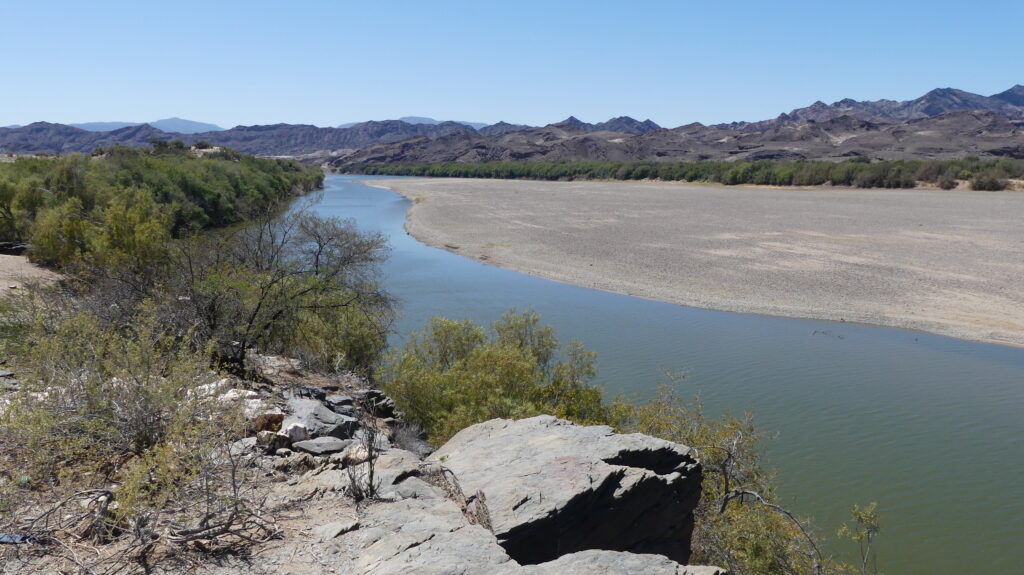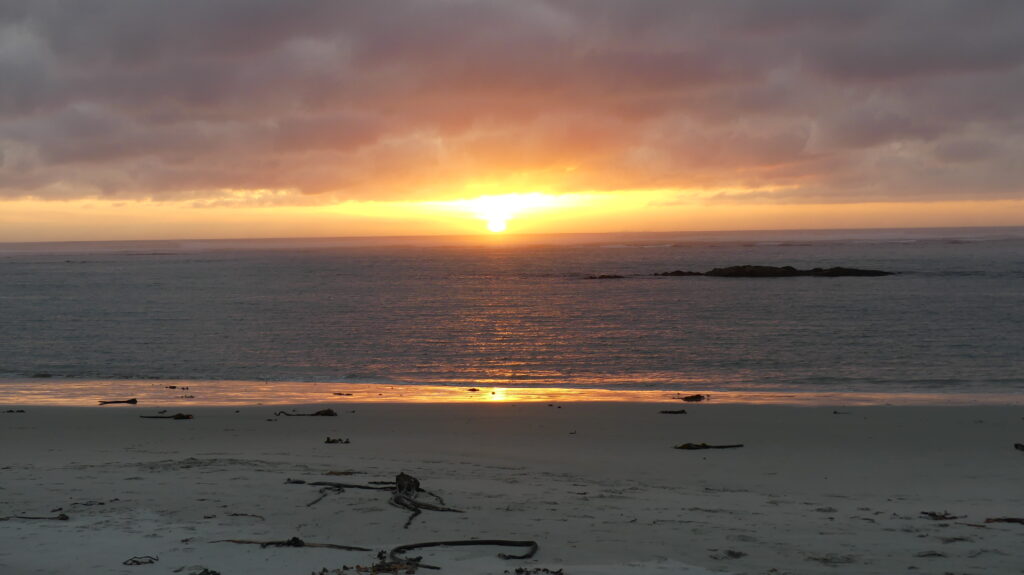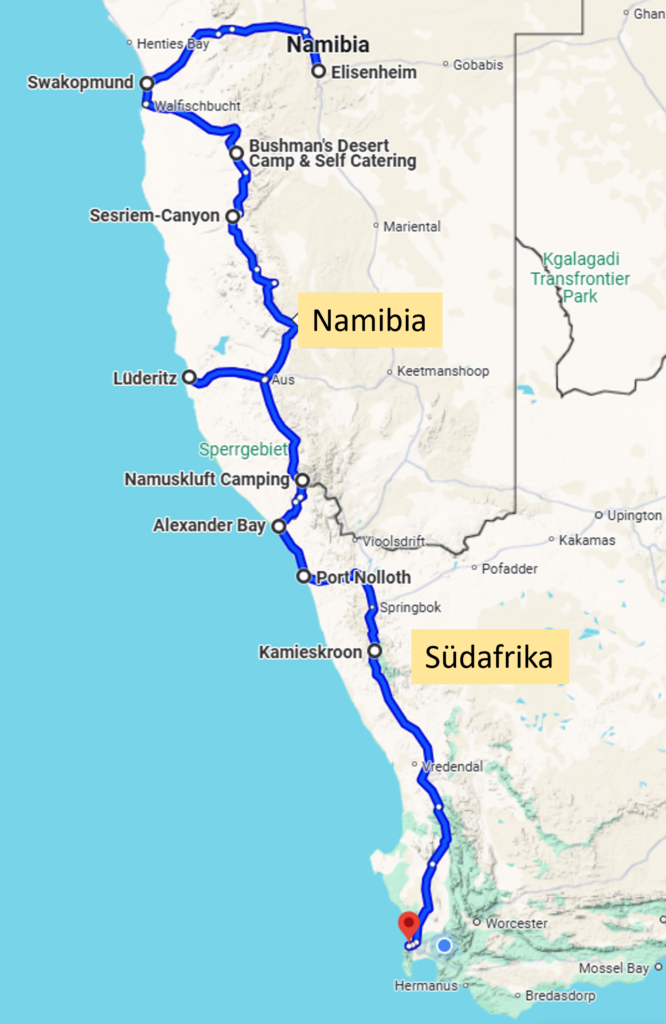Wir sind am Oranje, dem Grenzfluss zwischen Namibia und Südafrika angekommen (unsere aktuelle Routenplanung, Teil 1, hänge ich ganz unten an). Seit Millionen Jahren transportiert der Fluß große Mengen Sand aus dem Landesinneren in den Südatlantik. Dort wird der Sand von dem aus der Antarktis kommenden Benguelastrom an die namibische Küste getrieben, was den Oranje zum „Vater der Dünen“ in der Namib machte. Neben Sand transportiert der Fluss auch wahre Schätze: Diamanten aus den Drakensbergen bei Lesotho und aus der Region von Kimberley wurden wie der Sand in den Atlantik und von dort an den Strand von Namibia (s.o., Kolmannskuppe) geschwemmt. Sie mussten dort nur noch eingesammelt werden.
Es ist eine unwirtliche Region, die bis vor wenigen Jahren nur die Arbeiter von De Beers betreten durften – mit Schäufelchen und Sieb ausgerüstete Besucher hätten hier ja sonst ein paar Kluncker finden und mitnehmen können. Der Besitzer des gering frequentierten Camps klagt, dass sein Vater hier noch erfolgreich Karakul-Schafe gezüchtet hat, die 22.000 Hektar mittlerweile nahezu wertlos seien, denn der Klimawandel hat nun so oft den Regen ausfallen lassen, dass heute weder Schafe noch Ziegen hier überleben können.
Wir fahren westwärts bis zur Mündung, dem Oranjemund, wo wir die Grenze überqueren. Das Dumme dabei: Die Vertreterin der namibischen Zollbehörde stempelte unser Zolldokument, das „Carnet de Passages“ und bestätigte damit, dass wir Toyo ordnungsgemäß ausgeführt haben. Auf der anderen Seite des Flusses, in Südafrika, bestand eine spaßbefreite Immigrations-Offizierin darauf, dass der Grenzübergang von Oranjemund (NAM) nach Alexanderbay (ZA) keine „commercial border“ sei und sie uns deshalb nicht bescheinigen werde, dass wir Toyo ordnungsgemäß nach Südafrika eingeführt haben. Mal sehen, wie wir aus dieser Nummer rauskommen, wenn wir Südafrika mal wieder per Auto verlassen.




We have arrived at the Oranje, the border river between Namibia and South Africa. For millions of years, the river has transported large amounts of sand from the interior to the South Atlantic. There, the sand is driven to the Namibian coast by the Benguela Current coming from Antarctica, making the Oranje the „father of the dunes“ in the Namib. In addition to sand, the river also transports true treasures: diamonds from the Drakensberg mountains in Lesotho and from the Kimberley region have been washed into the Atlantic along with the sand and from there to the beaches of Namibia (see above, Kolmannskuppe). They only needed to be collected there.
It is a harsh region that, until a few years ago, could only be entered by the workers of De Beers – visitors equipped with small shovels and sieves could otherwise find and take a few gems here. The owner of the rarely frequented camp laments that his father was able to successfully breed Karakul sheep here, and that the 22,000 hectares are now nearly worthless, as climate change has caused rain to fail so seldom that neither sheep nor goats can survive here today.
We drive westward to the mouth, Oranjemund, where we cross the border. The downside: The representative of the Namibian customs authority stamped our customs document, the „Carnet de Passages,“ confirming that we have properly exported Toyo. On the other side of the river, in South Africa, a humorless immigration officer insisted that the border crossing from Oranjemund (NAM) to Alexander Bay (ZA) is not a „commercial border“ and therefore she would not certify that we have properly imported Toyo into South Africa. Let’s see how we get out of this situation when we leave South Africa by car again.“

Schreibe einen Kommentar